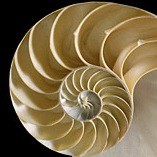Allah the Exalted states in the Quran that He creates whatever He wills by a word: كُن فَیَكُونُ
بَدِیعُ ٱلسَّمَـٰوَ ٰتِ وَٱلۡأَرۡضِۖ وَإِذَا قَضَىٰۤ أَمۡرࣰا فَإِنَّمَا یَقُولُ لَهُۥ كُن فَیَكُونُ the Originator of the heavens and the earth. When He decrees a thing, He only says to it, “Be!” and it is. (2:117)
This expression in Arabic above contains 7 letters. It appears in the Quran 8 times in the following Quranic ayat, starting with the one above: (2:117), (3:47), (3:59), (6:73), (16:40), (19:35), (36:82), (40:68). When we add all the sura reference numbers, the sum total is 125 (5³). If we take the number 5 to represent hands (from our human perspective), this is an exponential representation of “the Hand of God” — in the form of words. Next, add all the verse reference numbers, to get the sum total of 521 which is, amazingly, the 100th prime number! An utterly celestial number, representing 100%, completion/perfection in an indivisible way, being prime. But notice 125 and 521 are also reverse digits!
Now, what if we added all the sura numbers to the verse numbers? It should yield the same results as adding the above numbers 125+521=646. As an additional check, we did this anyway and added the results, which did in fact yield the sum of 646, a palindrome, with two prime factors: 17 x 19. The number 17 is the prime “half” of 34, itself related to a significant {3,4} pattern in the Quran’s very structure as well as text. The number 19 is significant in the Quran — but the Quran’s inimitable structure is more complex than division by a single factor. And more miraculous than we could imagine.
Continue reading




